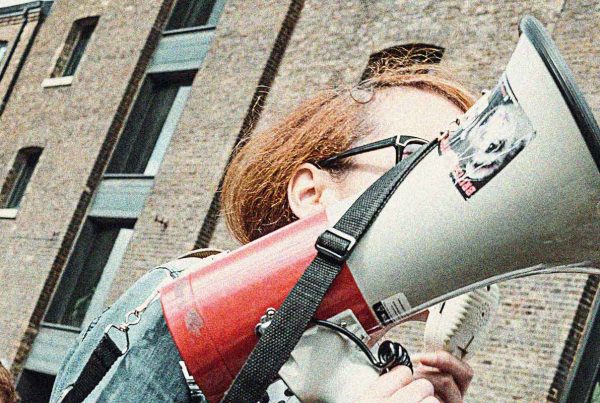Some provinces and territories took longer than others to declare a legal emergency, begging the question whether some will renew too quickly or too slowly. What’s the test for renewal, exactly? Why does that test matter, given that COVID19 is here to stay for the foreseeable future?
For over ten weeks, governments across Canada have taken control of significant aspects of our lives. There are orders in place across the country that decree where we can and cannot go. Our social lives are not merely the subject of recommendations and advice from public health officials. There are legally binding orders in place that say how many people we can associate with. In many cases these orders apply both outside and inside of our homes. Governments have decided that a fast food drive-thru is essential, but a house of worship is not. Even in our darkest moments, when we lose a loved one or close friend, the government has decreed how many people can be there to say goodbye. The level of control is staggering. But we have been forgiving – indeed, accepting – of the government’s encroachments on our freedoms, recognizing the risk posed by the virus.
But as time has worn on, I have been struggling with the characterization of what we are living through as an emergency. Within the five volumes and nearly two thousand pages that make up the SARS Commission report authored by Mr. Justice Archie Campbell, there is no playbook for a protracted public health emergency that tests the definition of the word, emergency. The report recognizes that deciding when to announce the “all clear” is a difficult call, but it is explicit that relaxing precaution levels and ending the emergency does not mean a return to the pre-pandemic “normal”. Much like the friend or colleague who marks every email as “URGENT” — at some point, the word loses its meaning, or just means that the sender is urgently anxious. So when does the COVID19 “emergency” end?
Many balked when, a few days ago, the Premier of Alberta said that that province’s state of emergency would expire on June 15th and would not be renewed (apparently without consulting the province’s Chief Medical Officer). Yet the Premier’s reasons were clear and concise: the public health emergency was declared to avoid overwhelming the health care system and the conditions that threatened that system no longer exist. According to Premier Kenney, Alberta has a thousand acute beds set aside for COVID patients, occupied by about 45 of those patients. The emergency in Alberta, based on both the medical evidence and the rule of law, is over.
Not so in BC, however. Right next door to Alberta, the legal emergency continues, notwithstanding that the evidence is presently that BC is in better shape than Alberta. Could both be right? The answer might be yes, but I find myself in the unusual position of agreeing with Jason Kenney.
If the collapse of the health care system is the emergency we sought to avoid, we have succeeded, at least for the time being. While the tide can turn quickly, no part of the country has seen the surge in hospital or ICU admissions that was predicted at the outset, and some parts of the country have seen exceptionally low numbers of infection. The territory of Nunavut has not had a single recorded COVID-19 case. In Yukon there were 11 cases, all of which have been resolved, as is the case for all 27 of P.E.I.’s recorded cases. Yet each and every one of these places remain in a state of emergency – a state in which executive power can be marshalled to do extraordinary things with minimal opportunities for meaningful oversight and accountability.
“No likely end in sight.” Those were the words used by B.C. Premier John Horgan to characterize the province’s state of emergency when he extended it last Wednesday by another two weeks. The state of emergency declared in response to the coronavirus pandemic will be the longest in the province’s history and, as the Premier stated so bluntly, we can expect this to go on, and on, and on.
But by definition, an emergency cannot become the status quo. An emergency, for legal purposes, is literally exceptional. At some point, the emergency ends, which does not mean that the reverse of an emergency is the status quo ante. The post-emergency circumstances may resemble the period immediately preceding the emergency, but not amount to the period of public health tranquility Canada enjoyed in 2019. It may be politically unpopular, and even administratively or medically risky and inefficient, but it would be legally correct, to proceed from a state of emergency, to the cessation of the emergency, followed soon thereafter (if necessary) by a state of emergency anew. Regardless, we have to recognize that characterizing the existence of the virus itself as the emergency means that there is nothing that will be exceptional or short-lived about it. The virus is a part of our world, and while we figure out if and how we can get rid of it (which the science seems to indicate is unlikely for the foreseeable future), we will also have to figure out how to live with it in a society that respects democratic principles and that values human rights and civil liberties.
Although extending the state of emergency across the country has become almost routine, our governments should be justifying their actions every step of the way. This should start with clearly defining the nature of the emergency and articulating how we will know when it is over, even if temporarily. Emergency measures that restrict or limit basic civil liberties can be justified if they are necessary and proportional. But those terms are relative. A restriction on our freedom to gather with extended family in our homes can only be necessary and proportional in relation to the objective we are trying to achieve by imposing that restriction. If we aren’t sure what it is, or if it is a moving target, it’s far too likely that any and every measure can be justified. In other words, fuzzy objectives create permissive environments for rights restrictions.
Declaring a state of emergency provides governments with sweeping powers. It renders the accountability mechanisms that usually keep executive power in check either inefficient, irrelevant or simply too hard to access. Opposition parties that normally hold the government’s feet to the fire fear that they will be accused of devaluing lives if they push back or question emergency measures.
Governments make orders that rest on the shakiest of constitutional foundations, knowing that, particularly during the emergency, access to the courts will be limited and painfully slow. Given what governments can do with emergency powers, surely it is necessary that they pinpoint what the emergency is and how we will know when it’s over or has abated such that our normal democratic processes can resume.
We are still dealing with a relatively new virus and there is much about it that we don’t know. But governments rarely operate in the realm of perfect and complete knowledge. Given what we do know – that this virus is with us with “no end in sight” – our governments have to think seriously about how we can safeguard public health while returning to our normal democratic processes – and the important checks and balances that accompany them.
About the Canadian Civil Liberties Association
The CCLA is an independent, non-profit organization with supporters from across the country. Founded in 1964, the CCLA is a national human rights organization committed to defending the rights, dignity, safety, and freedoms of all people in Canada.
For the Media
For further comments, please contact us at media@ccla.org.





